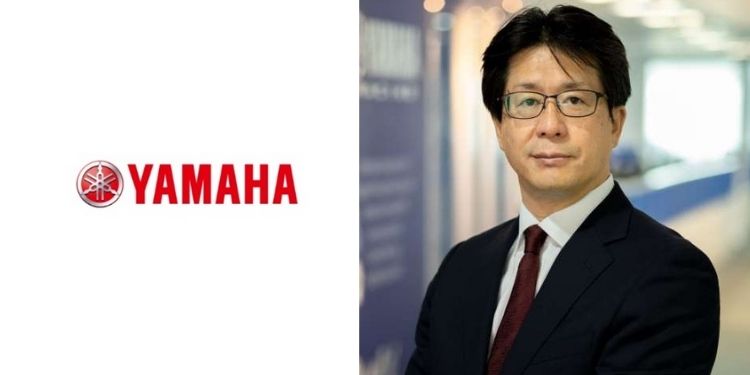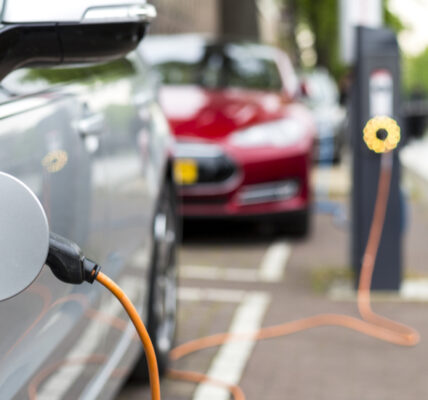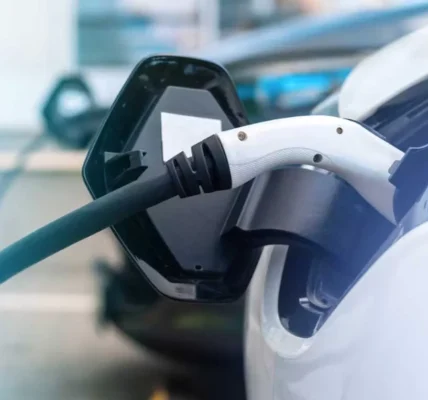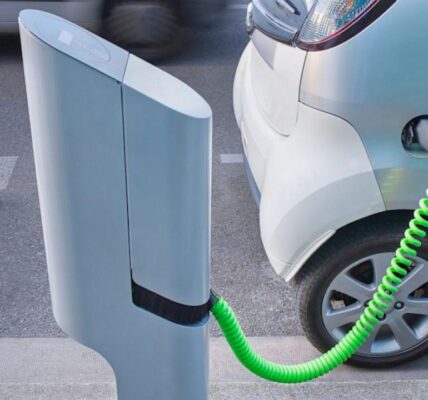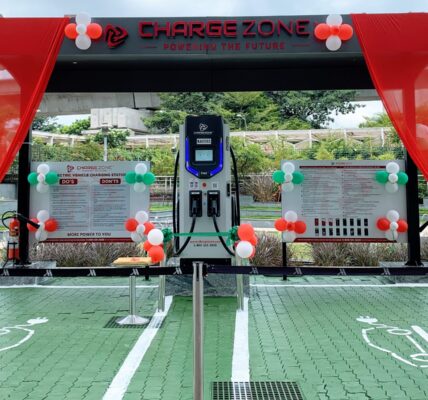It is four months now since Eishin Chihana took over as Chairman of Yamaha Motor India group but he has already seen enough during this time to understand the potential of this humongous market.
Even while two-wheeler sales across the country have reached record lows of 13-14 million units last fiscal, they are still sizable enough for companies like Yamaha to fight for a share of the pie. Chihana has also been closely observing the electric scooter trends and makes it known that his company is as keen to throw its hat into the ring quickly.
“I see the electric two-wheeler segment growing rapidly, especially for scooters which will be faster than anyone can imagine. In the case of motorcycles, this will take a bit more time,” he says. Yamaha has a dedicated team for development of electric scooters back at headquarters in Japan.
More recently, the company announced its new generation e-scooter, Neo’s, for the European market with plans to release it across ASEAN in phases. Work is now underway to see “how we can make a best fit for Indian usage”. This will mean checking out production options for Neo’s and using existing plant capacity optimally.
Additionally, positioning this model from the “marketing and communication point of view” is also being studied carefully. “Neo’s is the model for Europe and we are examining what is the best way to market it in India,” explains Chihana.
The Yamaha India Chairman reiterates that petrol-driven scooters are not going to disappear in a hurry and will stay relevant in the years to come. He says he is “carefully watching” the scenario unfold in the electric arena while quickly rattling out the numbers of startups and traditional manufacturers in this space. He has clearly done his homework well while keeping track of recent developments like the fires and recently announced battery swapping policy.
“In the case of Yamaha, which is a reliable OEM, we have brand reputation, sales network and trust to consider while making this move. Our target is to make electric scooters really usable and trustworthy while creating aspiration under the Yamaha brand,” says Chihana.
Insisting that he is a man “in a hurry and pushing my engineers a lot,” he makes it clear that this will be tempered with pragmatism. “Of course, we have to launch our product but seeing the activity of competitors, we have a great chance to be a game changer even if we are slightly late,” he adds.
From Yamaha’s point of view, there is “a lot of chance” to change market dynamics and increase its presence in electric scooters. “I am more than aware that Indian customers want a reliable brand,” he says.
The Neo’s was launched in March along with the E01 electric concept scooter and, interestingly, Chihana was involved in the development of both models over the last three years whilst in Japan. This included work right from design and development to test riding where a lot of time was spent focusing on “many different points of development”.
The idea was to constantly compare the new offerings to the more traditional ICE (internal combustion engine) two-wheelers and one of the key issues here was to develop a proper heat management system. “This has always been an important factor,” stresses Chihana especially when it comes to increasing charging speed and performance, achieving top speed and striving for longer mileage. Heat management, he adds, is “always challenging” from an engineering point of view.
Beyond this are the other obvious focus areas like the battery management system, cell technology etc and the Yamaha team wanted to ensure that a truly reliable electric scooter would be the perfect replacement for its ICE sibling. The Neo’s targeted for Europe can do this task but then the target size is a 50cc ICE.
“We can replace this with electric and I compared the two in Japan last October….this can completely replace (ICE) in performance too by and large,” says Chihana. Yet, it is important to “implement and check things carefully” while carrying out durable tests in a landscape like India with extreme climatic conditions.
Ground realities
By the end of the day, European specifications are in sync with many regions in the continent as well as Japan or even parts of ASEAN in terms of weather. However, conditions are different in India and its summers can be particularly treacherous as is the case this year when the country is literally boiling. This is when heat management systems for battery cells, motors and other parts become particularly critical.
“I am convinced that electric scooter penetration will increase in India due to high petrol prices and it makes sense for us to go for one too. I am obviously very keen but making the proper product is more important than hurrying up needlessly. I am aware of ground realities and it makes sense to take one step at a time,” explains Chihana.
Even while all the key work on electric vehicle development is happening out of Japan, he has been “pushing a lot” to enhance the levels of communication and knowledge sharing between the teams in Japan and the R&D workforce in Chennai which is now happening almost on a weekly basis. The efforts are paying off and the teams today swap information and discuss the best options for India.
As Chihana says, the EV teams in Japan comprise not just electric specialists but are also a combination of “mechatronic specialists plus scooter specialists”. It is this strength that helped Yamaha create reliable electric scooters for Europe and the same knowledge is now being transmitted to the Chennai R&D team.
The big plus in India, he continues, is that Indian vendors are also constantly working on other electric scooters. In the process, they have built their knowhow and are investing in their own R&D. These vendors have the technology for issues like battery management systems, motors etc which is a huge plus for Yamaha.
“We have mechatronic vendors in Japan too but for the Chennai team and Indian market, collaborating with vendors here will generate more speed and is beneficial for the future. Our Chennai R&D people are in close communication with these mechatronic vendors,” says a visibly pleased Chihana.
While the electric template for India is now firmly in place, the Yamaha India chief points out that e-scooters still account for a small share of the overall market. Right now, it is a little over three percent and may even grow to nearly 10 percent by the end of this fiscal. Growth beyond this level will clearly depend on the continuation of fiscal sops (FAME 2 incentives, state subsidies etc) but to expect electric scooters to take over 50 percent of the overall fleet is a bit too far-fetched at least for a large part of this decade.
As he says, ICE will play a dominant role in the two-wheeler arena and will account for more than half the overall population even in the short to midterm. It is this reality that has prompted headquarters in Japan to work on making India its second largest global hub after Indonesia for ICE vehicles.
De-risk policy
Two decades earlier, it was Taiwan which was Yamaha’s hub for global models and Chihana is now keen to see India playing a far more proactive role “next to Indonesia”. The thinking also stems from the need to have a de-risk policy in place especially if “something happens” in Indonesia and a backup becomes necessary. As an aside, having a plan B has become the norm for most automakers especially after the pandemic and global warming which has led to unexpected floods and fires.
In his view, ICE products made in India are “competent” enough to head out to South America, South Asia and Africa. “Why not in electric scooters too for advanced countries?,” poses Chihana. If the script goes according to plan, especially with the mechatronic capabilities of Indian suppliers already in place, there is no reason why scooters like the Neo’s and E01 cannot be exported from here to other parts of the world once the foundation is in place.
The conversation veers around to the battery consortium in which Yamaha is a part of both in Japan (with Honda, Suzuki and Kawasaki) and elsewhere across the world with Honda, KTM and Piaggio. Honda battery pack systems have been adopted for the Japanese consortium while talks are still underway in the other European group though it is essentially about using Honda’s system.
For India, battery standardisation talks are also happening and it remains to be seen if these will be on the lines of the Japanese consortium where Honda specifications will lead the way. Chihana is categorical that when it comes to battery systems in electric scooters, adopting a position of having a “unique system by Yamaha alone” will end up becoming a very expensive proposition.
Making independent investments or single specifications for Yamaha alone is both dangerous and risky, he adds. While differentiation in “brand character for Yamaha is fine” in terms of retail initiatives, this solo approach cannot extend to new and expensive domains like cells and battery management systems.
This will become a “different challenge altogether” and may not be worth anyone’s while in terms of risks involved. It is precisely the reason why collaborations in electric are happening at a rapid pace in the car arena while two-wheelers will also follow suit as rapidly.
“Technologies will grow and spread…and surviving by our investment alone in one system is not realistic. In the case of battery systems for small scooters, it is better to standardise and not compete. Having a standardised battery system is the best way forward,” reiterates Chihana.
What this implies remains to be seen and it is still a million dollar question how this business model will pan out in a large market like India. Honda and Yamaha have already tied up to make small electric scooters in Japan and there is enough reason to believe that this alliance between the two former foes will extend to new areas like electrification.
According to an industry observer, some kind of consolidation is already happening in Japan Inc where the likes of Toyota have joined hands with Suzuki and Mazda respectively to work on new areas like electrification. More recently, Honda has tied up with General Motors for this purpose while Renault and Nissan have been allies for decades.
Chihana does not dwell upon the subject though the fact remains that there is close communication in Japan between stakeholders of the consortium where engineering and technical information is constantly shared. Will this extend to India where the transition to electric is happening at a frenetic pace in the two-wheeler arena and a need to collaborate only becomes imperative? “The situation will become clearer in some years as the industry matures,” adds the observer.
Chihana is clearly raring to go in India and as a Yamaha veteran, it is hardly surprising that he is passionate about motorcycles while having spent time overseas too. Yet, he is amazed by what he sees in India in terms of two-wheeler volumes which are “really huge”.
The last four months have been an invaluable learning experience where the Yamaha India chairman says how much he enjoys himself watching riders use their bikes and their choice of brand. “Such kind of interest never ends and each day, while I commute from home to work or travel in Indian cities, I observe riders,” says Chihana. These are useful insights especially in a two-wheeler market which is both large and diverse “with so many varieties of use” across regions.
Premium segment
He has been busy travelling across the country visiting dealerships and spending time with suppliers while listening to their viewpoints. “All this gives me lessons on the motorcycle industry in India and its diversity which goes beyond just the size,” continues Chihana.
The fact that a host of rival brands ranging from Hero, TVS and Bajaj to Honda, Suzuki and Royal Enfield also tells him that Yamaha can also carve out its own place in the sun especially in certain segments. It was his predecessor, Motofumi Shitara, who changed the strategy and insisted that the Indian arm begin to focus on the premium model segment four years ago.
“It was the right direction to take and the perfect strategy,” says Chihana. Two-wheeler volumes in India “heavily dropped” in 2019 because of the regulations and the following two years saw the pandemic ravage the landscape as numbers fell to 14 million units.
Even in this grim backdrop, the good news is that the premium segment accounted for around 3.5 million units “under severe pressure” and this is a “huge number” when taken in the overall global context. For instance, Yamaha’s key market, Indonesia, reported near identical volumes of 3.5 million units last year which effectively meant that the premium segment volumes in India were almost equal to the whole Indonesian market.
As Chihana says, people tend to see the balance 65-70 percent commuter segment which translates into larger volumes but this does not dwarf the premium space by any stretch of imagination. From Yamaha’s point of view, this translates into a big chunk of customers whose numbers are only growing by the day. “By focusing on this space, we can hope to achieve good market share and ensure profitability which is the right thing to do,” he adds.
Quite unlike the past where the company tended to stray across all segments and not leverage its core DNA of power and styling, it is more focused this time around. The commuter space is difficult since the costing structure is way too competitive and profits will be slow in coming. Further, it is not the easiest of tasks building a network in rural and semi-rural regions where brands like Hero are firmly entrenched.
“We need to make returns on investments…the goal is to create aspiration and give a dream to customers at the premium end. Yamaha will clearly target urban and semi-urban India keeping in line with our successful track record worldwide,” says Chihana. He drives home the point that the idea is to target young customers in these regions with premium models that generate excitement and aspiration.
“This is our positioning where we are strong and have always been making sporty and stylish motorcycles compared to other companies which focused on bikes as a mode of transportation. This was the foundation of Yamaha and its DNA,” he continues. The company has clearly redefined its position in India and Chihana says his mission is to reinforce this strength and “evolve it to the next level”.
He is especially pleased with new offerings like the Aerox 155 which is “completely new and different” from other scooter models in the Indian market. “People are really enjoying the experience of weekend rides with this 155cc offering. It has now got a special positioning in the market…this is Yamaha where we want to create such exciting products for the future,” explains Chihana.
The company is clear that it will stay focused in the 125-155cc space which is in sync with its vision of targeting young buyers with these premium products. There are doubtless plans to bring in larger capacity motorcycles into the market sometime but for now brands like Aerox fit in well with established motorcycle offerings like the FZ range, R15, MT-15 and so on. “We have a wide range to offer in motorcycles for the premium sports segment,” he adds.
As part of its brand positioning in India, the company introduced ‘The Call of the Blue’ branding campaign in 2018. The second version followed a year later with Version 3 scheduled to debut in 2020 till Covid struck and threw life out of gear for two successive years.
“This year, in the second half post-summer, we will launch Version 3 of The Call of the Blue with lots of interesting communication and on-ground activity involving customer engagements, events and also our Blue Square dealerships. We are planning over 250 activities from both the company and dealerships,” says Chihana.
The campaign is clearly about the Yamaha message of stylish and sporty bikes and scooters. It will be interesting to see how it evolves when electric scooters also make their debut and reach out to a new category of customers. For now, the idea is to take one thing at a time and not put the cart before the horse.


